“Diamonds are a girl’s best friend,” famously proclaimed Marilyn Monroe back in 1949, and that sentiment still holds true today. However, the world of gemstones has evolved with the introduction of modern technology, leading to the emergence of intriguing new diamond shapes that have captured our attention.
Among these dazzling options, one particular shape shines brighter than the rest, both literally and figuratively: the round brilliant cut diamond. But what sets it apart and why does it dominate two-thirds of the diamond cut sales? If you’re curious to discover the reasons behind its unrivaled popularity, we have some captivating insights for you right here!
DESIGN YOUR OWN ENGAGEMENT RING: START WITH A SETTING OR START WITH A DIAMOND. IT’S REALLY UP TO YOU!
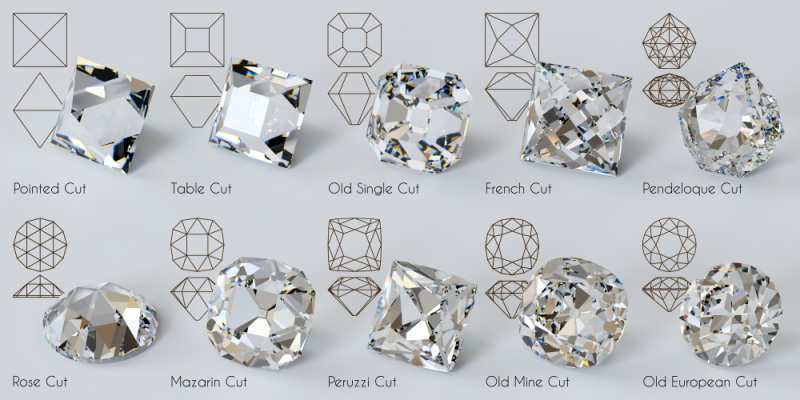
What Is A Diamond Cut?
Before delving into the specific diamond cut you’re eager to learn about, it’s important to clarify the distinction between the terms “cut” and “shape.” Although they are often used interchangeably, their meanings differ slightly.
The term “shape” refers to the physical form of the diamond, such as marquise, baguette, pear, emerald, and, of course, round. These are considered the basic shapes, but there are also numerous exotic and rare diamond cuts that have emerged with advancements in technology. These include kite, briolette, drop, lozenge, and many others, showcasing the creativity of master artisans.
Additionally, there is a category of old diamond cuts that are considered antiques, requiring specialized skills and traditional techniques to create. These include old single, old European, Peruzzi, rose, and more. Jewelry adorned with these antique cuts is considered antique itself if it is over a century old, while pieces that are somewhat “younger” fall into the vintage category.
On the other hand, contemporary master craftsmen have recently carved new and captivating cuts, such as the my girl diamond, the eight hearts diamond, and the criss cut. These shapes are often referred to as “fancy,” with the round brilliant cut being the classic exception that remains timeless in the industry.
While there is some overlap between shape and cut, the term “cut” encompasses more than just the facet arrangement. It describes the craftsmanship of the diamond, including how well the facets interact with light, the proportions of the gem, and the overall finish of the stone. It is important to note that cut should not be confused with specific facet arrangements like brilliant or trilliant.
In essence, a round brilliant cut diamond features a round shape with a specific arrangement of facets, which we will soon dazzle you with, and is crafted with exceptional skill. So, in summary, the diamond’s cut describes the overall craftsmanship of the stone and its impact on brilliance!
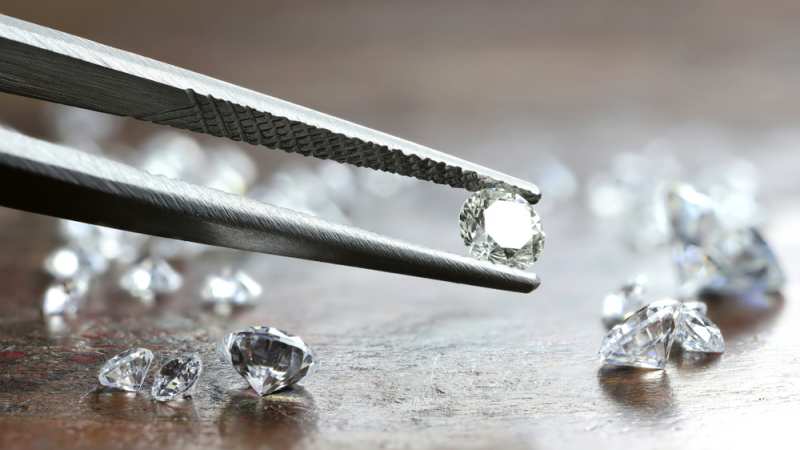
Diamond Brilliance: Why Is It Important?
Brilliance is the captivating interplay of light within a diamond, and understanding the reflective surfaces that enable this phenomenon is crucial. These surfaces, known as facets, are the individual sides of the diamond. They are strategically arranged to form distinct sections:
- Table: The large flat top facet that plays a key role in light capture.
- Crown: The upper portion of the diamond responsible for enhancing its brilliance.
- Girdle: The facets encircling the diamond’s perimeter.
- Pavilion: The lower half of the diamond.
- Culet: A tiny flat facet found at the bottom tip of the diamond.
The craftsmanship involved in shaping and detailing these facets determines the diamond’s cut. Skilled artisans, known as lapidaries, meticulously create these facets to optimize the diamond’s brilliance.
When light interacts with the diamond, a small portion of it reflects off the facets, while the majority penetrates the facet walls and enters the center of the stone. Inside the diamond, the light rays bounce among the internal facet walls, akin to the reflection in mirrors. This dance of light contributes to the diamond’s brilliance, similar to the different styles of dance.
To achieve brilliance, the diamond’s facets are positioned to control the direction of the light waves as they enter the diamond. The objective is to redirect the light rays from any angle so that they exit the diamond at the top, aligned with the viewer’s line of sight. This type of reflection is known as brilliance.
A diamond with facets arranged in this manner is referred to as a “brilliant.” However, we will delve deeper into this concept shortly.
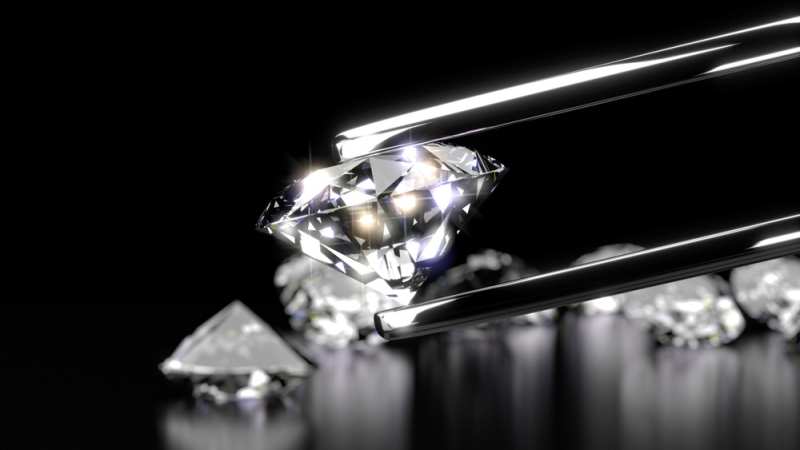
Diamond Shine: Is There More Than Brilliance?
Indeed, brilliance is not the only factor responsible for the sparkling beauty of a diamond. There are two other reflections that contribute to its allure.
Scintillation
Often overlooked, scintillation is a crucial aspect of a diamond’s sparkle. About 15 years ago, AGS conducted a groundbreaking study that emphasized the significance of scintillation as one of the most captivating light plays observed in a gem.
Scintillation is characterized by dynamic changes in the fire pattern, where flashes of white light are visible across the diamond’s crown. Two distinct aspects of scintillation contribute to the sparkle: fire and flash. Both of these occur when there is movement involved, be it the stone, the light source, or the viewer.
The key is to direct the light waves throughout the diamond’s body, not just on its surface, while ensuring they are within the viewer’s line of sight. This creates an illusion of light skipping between the facets, resulting in a captivating sparkle. Ideally, the crown facets should exhibit desirable sparkle, while a poorly cut diamond may have areas that lack flashes altogether. Flash scintillation is more common and can be observed in a wider range of lighting conditions, typically manifesting as white flashes.
Therefore, it is common to see diamonds exhibiting a white sparkle. On rare occasions, fire scintillation occurs, where colored light rays seem to “skip” within the diamond. To learn more about scintillation in diamonds, you can explore additional resources.
Fire
Fire in a diamond refers to the colored flashes that appear to be trapped inside the stone. When white light enters the diamond, it naturally consists of various colors. As the light bounces off different facet walls, it disperses into a beautiful rainbow of colors present in white light: red, orange, yellow, blue, green, and violet. Each color bends and reflects uniquely. The longer the light ray travels and bounces, the greater the dispersion of colors, while the remaining white light exits the diamond through its facets.
Diamonds are renowned for their exceptional dispersion properties among all known materials. This dispersion creates the mesmerizing fire effect, adding an enchanting touch to the diamond’s overall brilliance.
There is another light phenomenon related to diamonds known as fluorescence, which is worth exploring separately, as it has minimal connection to the diamond’s cut. To delve deeper into diamond fluorescence, you can refer to dedicated resources on the topic.
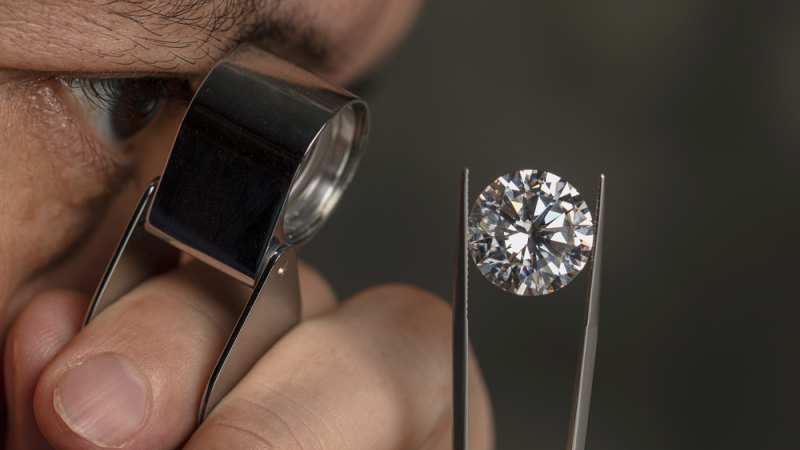
What Has Cut To Do With The Diamond Shine?
The art of shaping a diamond involves the meticulous arrangement of its facets. The cut of a diamond holds the utmost importance among the 4Cs, as it determines other crucial aspects such as clarity, color, and carat weight.
Every purchased diamond comes with a comprehensive report that provides information about its characteristics. Round brilliant diamonds have their own dedicated grading system, known as the GIA Diamond Cut Grading System. This system evaluates seven components within the D-Z color range.
The first three components focus on the diamond’s visual appearance and its interaction with light. The remaining four components, namely symmetry, durability, polish, and weight ratio, pertain to the craftsmanship and design of the stone.
During the evaluation process, the relative value of each property is carefully considered. Consequently, there are various combinations that cater to different tastes and preferences of buyers.
The cut grade is assessed on a scale of 0 to 10, ranging from Poor to Excellent. An excellent cut diamond exhibits a balanced pattern of bright and dark areas, achieved through scintillation, for instance.
AGS (American Gem Society) has formulated a slightly more detailed scale, with “Ideal” being the highest grade. This designation is recognized as the pinnacle of the cutting industry, making a distinction when a jeweler refers to a diamond as “ideal” versus AGS Ideal.
When a diamond is well-cut, it can create an optical illusion that makes a smaller stone with superior cut quality appear larger than a larger stone with a lesser cut grade.
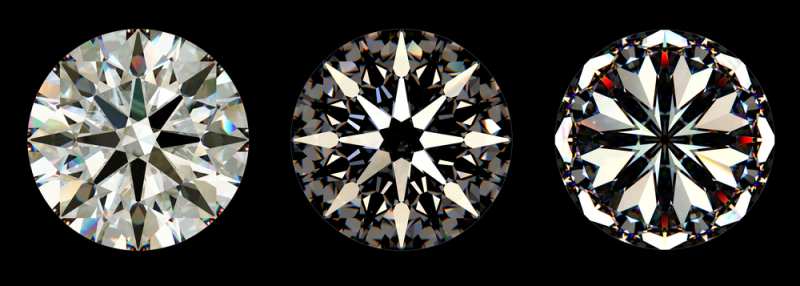
The Diamond Cut: How It’s Achieved
Diamond cutting has evolved significantly since its origins around 300 BC in India. It’s not surprising that the Indians excelled in this craft, as they were the first to discover diamonds and produce renowned gems like the Koh-I-Nor. However, European diamond cutters were not far behind. Travel accounts from the 17th century, such as those by Tavernier, mention European cutters working in India, although their exact role is uncertain.
Initially, the cutting process involved polishing, and if there were deep imperfections, additional facets would be glued onto the diamond. Over time, with the advent of cutting wheels, the process became more sophisticated. Today, diamond cutting consists of four main phases:
- Cleaving: The diamond is split along its tetrahedral plane to create a more manageable size before further cutting.
- Sawing: Rough shaping of the table and girdle, avoiding weak areas.
- Cutting/Bruitting: The diamond’s outline is determined using another diamond. This can be done by hand (bruiting) or with the aid of a machine (cutting).
- Polishing: The finest details are achieved using diamond powder, resulting in a smooth finish that allows light rays to enter.
However, there is something special about the round brilliant diamond cut. In 1919, Belgian engineer Marcel Tolkowski published his book “Diamond Design,” in which he described the optimal proportions for a round brilliant cut. This included a 53% table, 59% total depth, and a knife-edged girdle. Subsequent modifications were made, such as a closed-up culet, a larger table, and an extended lower half. By the 1950s, these refined characteristics gave birth to the round brilliant cut as we know it today.
A round brilliant diamond consists of 57 facets, with the optional culet being the 58th facet. The facets are arranged to highlight the prominence of the table, while the crown plays a leading role with its eight bezels, eight stars, and 16 upper halves. These facets create the light plays and the bright-dark pattern described earlier. The pavilion facets include 16 lower halves, eight mains, and potentially a culet, reflecting light waves back through the crown.
Modern technology has played a crucial role in the advancement of diamond cutting. Inventions like the Firescope have made it possible to visualize the “hearts and arrows” pattern that a diamond cut to Tolkowski’s proportions exhibits. Inclusion-mapping software and high-speed laser cutting have also contributed to the diamond cutting process. However, a scientific approach remains essential in understanding and analyzing the appearance aspects of the round brilliant cut.
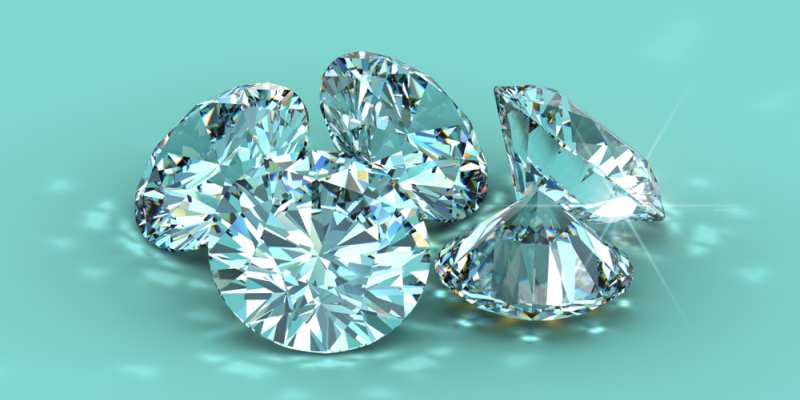
Final Decision
The cut of a diamond is the most critical factor, distinct from its shape, as it represents the quality of how the gem is fashioned. While various diamond cuts have been developed over time, one particular cut stands out as the epitome of perfection and continues to dominate the market.
Round brilliant cut diamonds possess a round shape and are meticulously crafted with 57 to 58 precisely arranged facets. The arrangement of these facets ensures a balanced distribution of scintillation, with an equal interplay of dark and bright areas. It is this cut that offers optimal light reflection, resulting in a stunning display of brilliance.
Due to their exceptional proportions and ability to maximize light performance, round brilliant cut diamonds can command high prices, reaching up to $50,000 per piece.


